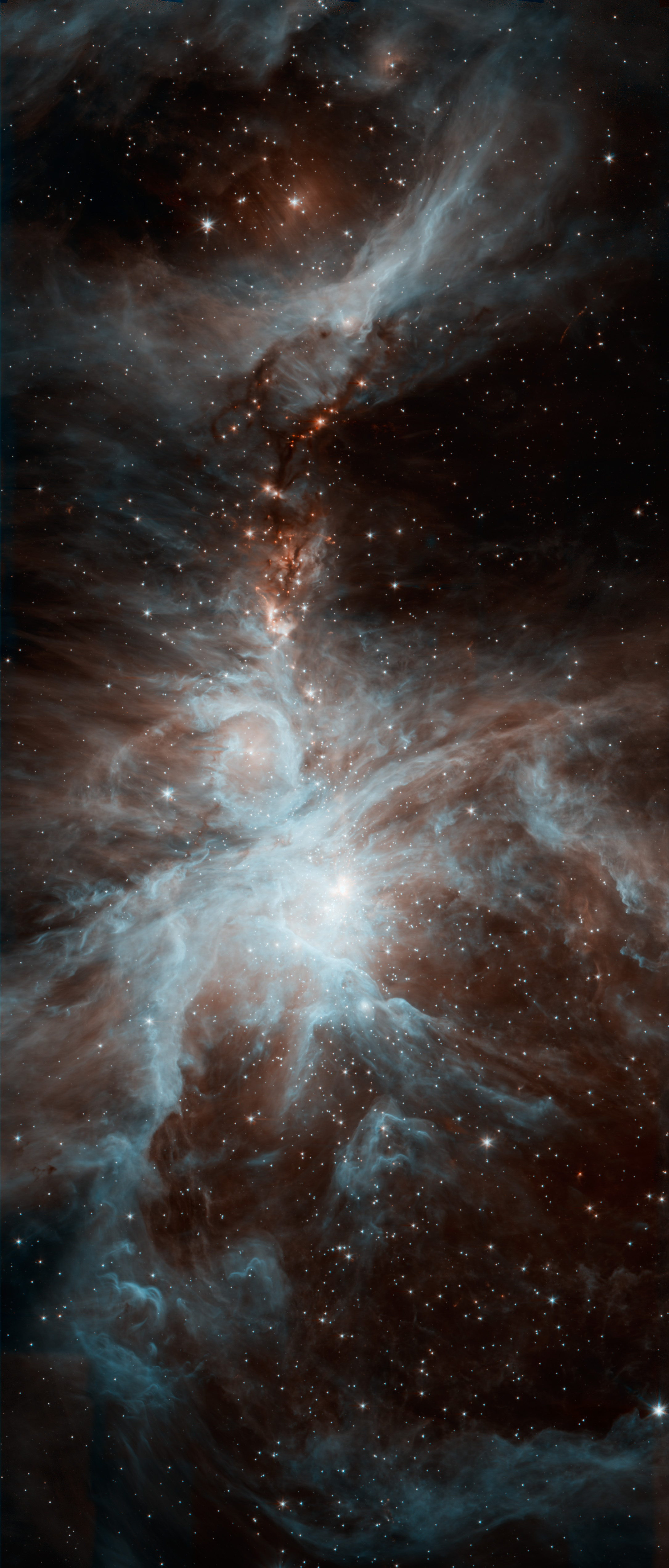2019 August 31
Spitzer’s Orion
Image Credit: NASA, JPL-Caltech
Explanation: Few cosmic vistas excite the imagination like the Orion Nebula, an immense stellar nursery some 1,500 light-years away. Spanning about 40 light-years across the region, this infrared image from the Spitzer Space Telescope was constructed from data intended to monitor the brightness of the nebula’s young stars, many still surrounded by dusty, planet-forming disks. Orion’s young stars are only about 1 million years old, compared to the Sun’s age of 4.6 billion years. The region’s hottest stars are found in the Trapezium Cluster, the brightest cluster near picture center. Launched into orbit around the Sun on August 25, 2003 Spitzer’s liquid helium coolant ran out in May 2009. The infrared space telescope continues to operate though, its mission scheduled to end on January 30, 2020. Recorded in 2010, this false color view is from two channels that still remain sensitive to infrared light at Spitzer’s warmer operating temperatures.
斯皮策望远镜拍摄的猎户座大星云
影像提供: NASA, JPL-Caltech
说明: 很少有宇宙景观,能像大约1,500光年远的庞大恒星形成生区─猎户座星云,这么善于激发人们的想像力。这幅涵盖此星云约40光年宽区域的红外光影像,建构自斯皮策太空望远镜的数据。这些数据原先拍摄之目的,是要监测星云内年轻恒星的亮度变化,其中有许多仍包裹在富含尘埃,正在形成行星的拱星盘里。与太阳的46亿年高龄比起来,猎户星云的年轻恒星只有1百万年稚龄。而位在影像中心附近的明亮星团,则是拥有此区域最炽热恒星的四边形星团。在2003年8月25日发射进入绕日轨道的斯皮策太空望远镜,在2009年5月耗尽其冷却用的液态氦。不过,这部红外光太空望远镜仍持续运转,预定在2020年1月30日结束观测任务。这幅摄于2010年的假色影像,建构自斯皮策太空望远镜在较高运转温度时,仍然能感测红外光的二个通道之数据。







